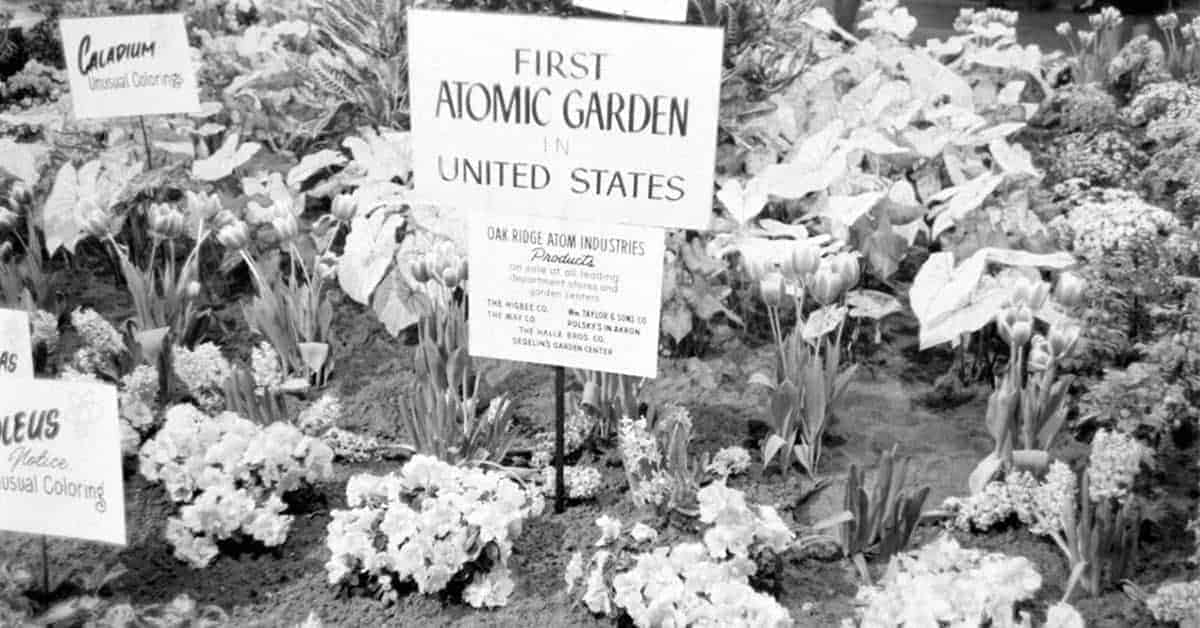From the devastating impact of nuclear warfare to the generation of cheap, reliable electricity and lifesaving medical technology, most are aware of the profound ways in which the nuclear age fundamentally changed our world. But what about the food we eat? Has our food supply been effected by the nuclear age as well? A little-known trend in food cultivation, which began during the 1950s and 1960s used nuclear technology in an attempt to produce new varieties of plant life.
While the idea is far less popular today, some of the resulting varieties of vegetation from these experiments are still with us today. In fact, many common foods such as grapefruit and peppermint are examples of food modified by atomic bombardment. You may think experiments with food had to be conducted by sophisticated laboratories executed under strict scientific controls. While this was sometimes the case, shockingly, an entire movement of amateur gardeners started planting irradiated seeds in their backyard, enthusiastically watching their gardens to see what would develop.

Today, most people would fear exposure to nuclear radiation as its dangers are well known. But these things can be explained if we understand how little was truly understood about the effects of nuclear technology during those early years. While the world witnessed directly and in graphic detail, the devastation of the atomic bomb, many influential people wanted to find peaceful uses for this new and obviously terrifying technology. Some strongly believed that finding peaceful uses would help shift attention away from nuclear war to peaceful ways of harnessing the immense potential of the atom.
Even President Eisenhower was interested in resolving “the fearful atomic dilemma” as he gave his “Atoms for Peace” speech in 1953. In it, he hoped “the miraculous inventiveness of man” could be used to preserve civilization, not destroy it. Indeed, his words prompted some to take action in order to find alternate ways to use this new technology.
Many peaceful atomic initiatives developed after this speech was given. Some of it was even done by private individuals. It was during this political and social climate that “atomic gardening” became a popular fad. It all started in 1957 when a dentist from Tennessee named C.J. Speas received permission to obtain a source of Cobalt-60 from the Atomic Energy Commission in order to expose seeds to radiation.
Astoundingly, it was possible for an ordinary citizen like Speas to obtain radioactive material from the government in the 1950’s. Soon, he began exposing a wide variety of seeds to radiation within a cinderblock, purpose-built bunker in his own backyard. By 1960, he founded “Oakridge Atomic Industries, Inc.” and began selling his seeds commercially. Speas eventually sold millions of seeds to a variety of people and became the only source of this type of product in the United States.

Unfortunately, detailed records were not kept so it is not possible to know exactly who bought the majority of the seeds, what varieties were most popular with purchasers or in which parts of the country the seeds were most commonly planted. No one even knows where the sample of Cobalt-60 is today, and the bunker where his seeds were irradiated no longer exists.
But we do know that one of Speas’ biggest customers was a rather eccentric woman from Britain named Muriel Howorth. She was a life-long activist espousing the benefits of nuclear technology since the early 1950’s. So dedicated was she to the cause of nuclear energy, Howorth even produced an exceptionally odd play in which actors dramatized protons, neutrons, rats cows and even personified knowledge itself.

